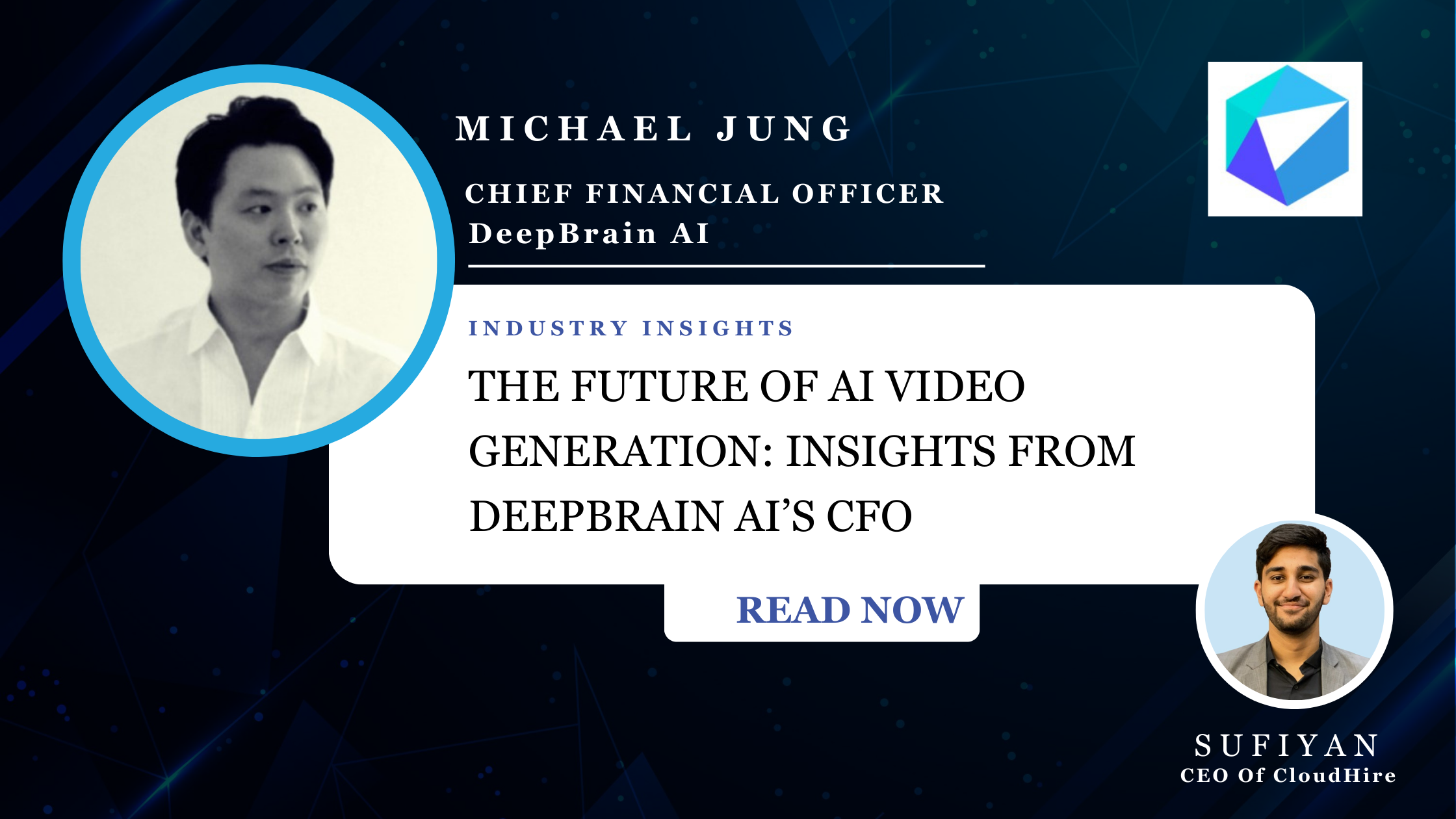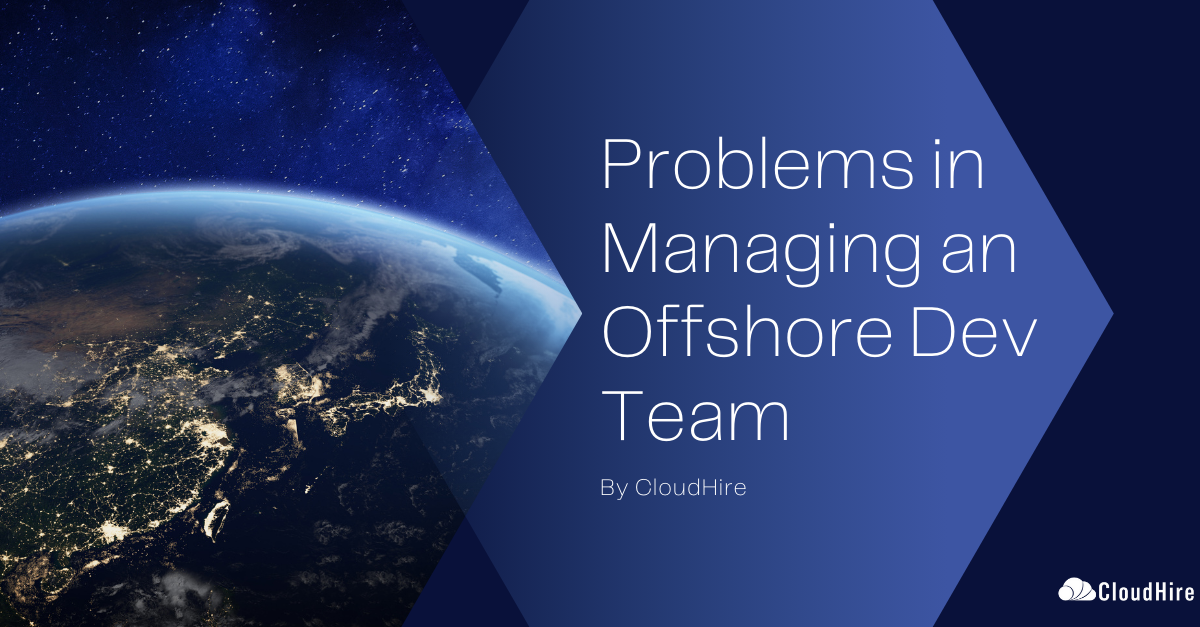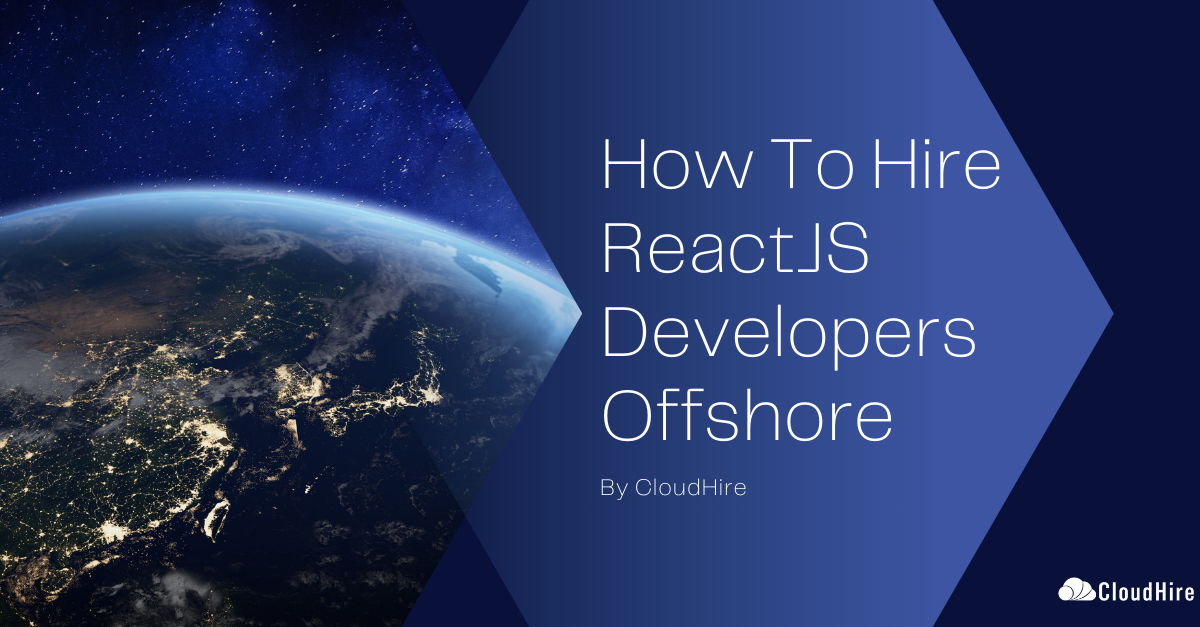In today’s rapidly evolving digital landscape, artificial intelligence is revolutionizing how we create and consume content. One of the most exciting frontiers in this space is AI-powered video generation. To gain insights into this cutting-edge technology, we spoke with Michael Jung, CFO and Head of Global Business Development at DeepBrain AI, a leader in generative AI avatar solutions.
The Evolution of AI-Powered Communication
DeepBrain AI’s journey began with chatbots, but the company quickly recognized the potential for more immersive and engaging AI interactions. They pivoted from text-based conversations to voice interactions, and now to fully visual AI avatars that can engage in lifelike conversations.
This evolution reflects a broader trend in how people consume information. As Michael points out, we’re living in a video-centric world where platforms like YouTube and TikTok dominate leisure time. Businesses are taking note, seeking ways to create more video content efficiently and cost-effectively.
The Technology Behind AI Avatars
At the heart of DeepBrain AI‘s technology is a sophisticated machine learning model that can create highly realistic AI avatars from video footage of real people. The process involves several key steps:
- Data Collection: Filming a person for anywhere from 1 minute to 2 hours, depending on the desired quality and complexity. This footage captures a wide range of facial expressions, movements, and speech patterns.
- Data Processing: The collected video data undergoes extensive preprocessing to clean and normalize the information, ensuring high-quality input for the machine learning models.
- Machine Learning: The system conducts intensive machine learning on this footage for 1 minute to 2 weeks, analyzing:
- Facial movements and micro-expressions
- Lip-syncing patterns
- Natural gestures and body language
- Voice characteristics and speech patterns
- Model Training: The AI model is trained to generate realistic movements and expressions that match the input text or speech, creating a digital replica of the filmed individual.
- Deployment: The resulting avatar is deployed in various applications, from video creation tools to interactive platforms. The system can generate new videos of the avatar speaking and moving based on text input.
- Real-time Rendering: For interactive applications, the system can render the avatar in real time, allowing for dynamic conversations and interactions.
The company has achieved an impressive 96.5% similarity between their AI-generated videos and the original footage. This level of realism is made possible by deep learning techniques, particularly generative adversarial networks (GANs) and advanced natural language processing models.
DeepBrain AI’s technology goes beyond simple video manipulation. It creates a dynamic, responsive digital human that can engage in natural conversations, make appropriate gestures, and convey emotions, opening up a wide range of possibilities for businesses across industries.
Applications and Use Cases
While DeepBrain AI‘s technology has broad applicability, certain industries have emerged as early adopters:
- Financial Services:
- AI bankers are already assisting customers in Korea, providing 24/7 support for basic banking queries and transactions.
- Financial institutions are using the technology to convert complex investment reports into engaging video content, making financial information more accessible to clients.
- Personalized financial advice can be delivered at scale, with AI avatars explaining investment strategies or market trends.
- Human Resources:
- Many companies are leveraging AI-generated videos for employee training, reducing the need for repetitive filming sessions and allowing for personalized learning experiences.
- AI avatars can conduct initial job interviews, providing a consistent experience for all candidates and freeing up HR staff for more complex tasks.
- Onboarding processes can be streamlined with AI-guided tours and explanations of company policies and procedures.
- Customer Service:
- Businesses are exploring how AI avatars can provide 24/7 customer support, offering a more personalized and engaging experience than
- Multi-lingual support becomes more feasible, as the same avatar can be programmed to speak multiple languages fluently.
- Complex product explanations or troubleshooting can be delivered visually, improving customer understanding and satisfaction.
- Education:
- The potential for AI tutors is generating significant interest in the education sector, allowing for personalized learning at scale.
- Virtual lecturers can deliver consistent content across multiple classes or campuses.
- Language learning applications can provide realistic conversation partners for practice.
- Healthcare:
- Some organizations are experimenting with AI doctors to provide basic medical information and triage, potentially reducing the burden on healthcare systems.
- Mental health support applications are exploring the use of AI avatars for initial consultations or ongoing support between therapy sessions.
- Patient education about medical procedures or medication regimens can be delivered more engagingly through AI-generated videos.
- Entertainment and Media:
- News organizations are exploring AI anchors for delivering 24/7 news updates.
- The film and gaming industries are investigating the use of AI avatars for background characters or to extend the careers of iconic actors.
- Virtual influencers and brand ambassadors can be created and managed more efficiently.
- Retail:
- Virtual shopping assistants can guide customers through online stores, providing product information and recommendations.
- AI avatars can model clothing or demonstrate products, creating more engaging e-commerce experiences.
These applications demonstrate the versatility of AI avatar technology and its potential to transform various sectors by providing more engaging, personalized, and scalable interactions.
Challenges in Development and Scaling
Building and scaling an AI model of this complexity comes with significant challenges. Michael highlighted several key areas:
- Data Requirements: Achieving high-quality results requires substantial video data, which can be time-consuming to collect and process.
- Gesture and Outfit Flexibility: Users increasingly want avatars capable of gestures and outfit changes beyond what was initially filmed, requiring more advanced AI capabilities.
- Rapid Technological Changes: The fast-paced nature of AI development means constantly integrating new technologies into existing platforms.
- Quality Assurance: Ensuring stable service as the platform scales is an ongoing challenge.
- Talent Acquisition: Finding skilled machine learning engineers and data manipulation experts is crucial for continued innovation.
Solutions to Development and Scaling Challenges
To address these challenges, DeepBrain AI and similar companies in the industry are implementing various strategies:
- Efficient Data Collection and Augmentation:
- Developing more efficient filming techniques to capture maximum data in minimal time.
- Data augmentation techniques are used to artificially expand the dataset, creating variations in lighting, angle, and expression from existing footage.
- Advanced AI Models for Flexibility:
- Investing in research to develop AI models that can generalize better, allowing for the generation of unseen gestures or outfits.
- Exploring transfer learning techniques to apply knowledge from one avatar to another, reducing the need for extensive filming for each new avatar.
- Modular Architecture and Continuous Integration:
- Designing systems with a modular architecture to allow for easier integration of new technologies.
- Implementing robust continuous integration and deployment (CI/CD) pipelines to smoothly incorporate updates and new features.
- Scalable Infrastructure and Automated Testing:
- Utilizing cloud computing and distributed systems to handle increasing computational demands.
- Implementing comprehensive automated testing suites to maintain quality as the system scales.
- Employing chaos engineering principles to identify and address potential points of failure before they impact users.
- Talent Development and Collaboration:
- Investing in internal training programs to upskill existing staff.
- Partnering with universities and research institutions to access cutting-edge expertise and potential talent.
- Leveraging global talent through remote work arrangements, possibly using services like CloudHire to access international pools of skilled professionals.
- Ethical AI Development:
- Establishing clear ethical guidelines and governance structures for AI development.
- Investing in research on bias detection and mitigation in AI systems.
- Collaborating with policymakers and ethicists to develop industry standards for responsible AI use.
- User-Centric Design and Feedback Loops:
- Implementing robust user feedback systems to quickly identify and address issues or desired features.
- Using A/B testing to optimize avatar performance and user experience.
- Cross-Industry Collaboration:
- Participating in industry consortiums to share knowledge and best practices.
- Exploring partnerships with companies in complementary fields to enhance capabilities and applications.
By implementing these solutions, companies like DeepBrain AI can address the complex challenges involved in developing and scaling AI avatar technology, paving the way for more widespread adoption and increasingly sophisticated applications across various industries.
Ethical Considerations and Safeguards
As AI-generated content becomes more prevalent and realistic, ethical concerns naturally arise. DeepBrain AI has implemented several measures to address these issues:
- User Responsibility: Subscribers must agree to terms of service that make them responsible for the content they create.
- Content Moderation: The platform includes systems to block the creation of controversial or inappropriate content.
- Deepfake Detection: DeepBrain AI has developed technology to detect whether videos or voices were generated by AI, helping to combat potential misuse.
- Transparency: The company encourages users to clearly label AI-generated content, maintaining transparency with viewers.
The Business of AI Video Generation
From a financial perspective, Michael offers an optimistic outlook on the AI industry. He points to the rapid revenue growth of companies like OpenAI as evidence that users find genuine value in AI solutions and are willing to pay for them.
DeepBrain AI’s own success supports this view, with over 1,000 paying subscribers already using their platform. The key, Michael suggests, is creating products that are not just technologically impressive but genuinely useful in solving real-world problems.
Looking to the Future
As AI-generated video becomes increasingly sophisticated and widespread, Michael anticipates a shift in how businesses and consumers perceive this content. Just as we’ve grown accustomed to AI-generated voices in various applications, he expects that AI-generated video will become commonplace when the content itself is the primary focus.
This transition could lead to a significant increase in video content production across industries, as businesses leverage AI to create more engaging and personalized communications at scale.
The Role of Global Talent in AI Development
The development of cutting-edge AI technologies like those at DeepBrain AI requires a diverse, global talent pool. While the company’s core R&D team is based in Seoul, they also have offices in China and the United States to tap into different markets and talent bases.
This global approach to talent acquisition and development is becoming increasingly common in the tech industry. Companies like CloudHire, a global remote staffing firm, are playing a crucial role in helping businesses access the international talent they need to drive innovation in AI and other cutting-edge fields.
By leveraging services like talent search, employer of record (EOR), and remote staffing, companies can build diverse, skilled teams capable of tackling the complex challenges involved in AI development and scaling.
Conclusion
The rapid advancement of AI video generation technology, as exemplified by DeepBrain AI’s work, points to a future where video content is more personalized, engaging, and ubiquitous than ever before. While challenges remain in terms of development, scaling, and ethical considerations, the potential applications across industries are vast and exciting.
As this technology continues to evolve, it will be fascinating to see how businesses and consumers adapt, and how it reshapes our digital interactions. One thing is certain: the future of content creation is here, and it’s powered by AI.








